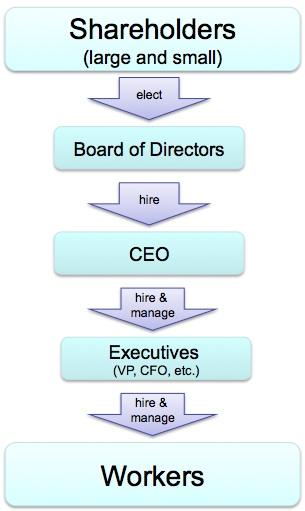Corporate governance is entering a reset. After years of box‑ticking compliance, boards from New York to Frankfurt face a new calculus: ethics is no longer a soft signal but a hard requirement. Record enforcement actions, higher disclosure bars, and increasingly unforgiving markets are pushing companies to prove-not just promise-responsible conduct.
Regulators are setting the pace. The EU has moved ahead with sweeping reporting and due‑diligence regimes, the U.S. has tightened expectations on climate and cybersecurity disclosures, and global standards for sustainability reporting have begun to take hold. Whistleblower programs continue to deliver headline awards, while greenwashing and human‑rights claims are drawing sharper scrutiny from watchdogs and investors alike.
This article examines how ethics is moving to the center of corporate oversight-reshaping board mandates, redefining risk, and redrawing the lines of accountability. From AI governance to supply‑chain transparency and executive incentives, the future of corporate governance will be measured as much by integrity as by earnings.
Table of Contents
- Boards put ethics at the center as AI data and climate risks reshape oversight
- Deep dive into the new governance toolkit integrity metrics stakeholder mapping and real time risk sensing
- What companies should do now appoint independent ethics officers link pay to conduct expand whistleblower protections and audit supply chains
- The Conclusion
Boards put ethics at the center as AI data and climate risks reshape oversight
With regulatory pressure mounting and investors demanding verifiable transparency, boards are moving from box-ticking to principle-led governance, embedding AI data stewardship, climate risk management, and human impact into strategy, audit, and remuneration structures; agendas now include data provenance for training sets, science-based decarbonization paths, and escalation protocols for model failures, while compensation is tied to measurable outcomes in safety and emissions reduction.
- Oversight architecture: Risk, audit, and sustainability committees converge; directors with AI, climate, and human-rights expertise gain influence.
- Data governance: Provenance logs and IP checks for datasets; independent audits for bias and privacy; model cards accompany board materials.
- Climate accountability: 1.5°C-aligned transition plans; Scope 3 verification; stress tests for disorderly policy and supply shocks.
- Workforce and community impacts: Guardrails for automation, reskilling funds, and transparency for high-stakes algorithmic decisions.
- Metrics and incentives: Pay linked to AI incident rates, explainability thresholds, and emissions milestones with external assurance.
- Disclosure posture: TCFD/ISSB-aligned reporting plus plain-language AI statements; assurance expands beyond financials to model and climate data.
Deep dive into the new governance toolkit integrity metrics stakeholder mapping and real time risk sensing
Boards and regulators are converging on a new class of governance tooling that operationalizes ethics by quantifying behavior, mapping influence, and sensing risks as they form. Early adopters report that standardized integrity KPIs-tracking decision reversals, exception rates, third‑party dependencies, and leadership communication consistency-are now tied to compensation controls and supplier gateways, while privacy‑preserving stakeholder graphs reveal shadow power centers and conflict clusters across HR, procurement, and community interfaces. A continuous risk stream ingests hotline patterns, contract variances, social signals, and control telemetry, using anomaly models and explainable AI to deliver board‑ready heat maps with traceable drivers. The result: faster time‑to‑detection, fewer blind spots, and audit‑defensible oversight that aligns ethics, performance, and regulatory expectations without sacrificing data minimization or accountability.
- Integrity metrics: Integrity Score, Decision Hygiene Index, Speak‑Up Utilization Rate, Third‑Party Exposure, Fairness Drift
- Stakeholder mapping: Influence Graphs, Conflict‑of‑Interest Radar, Critical Vendor Constellations, Community Impact Layer
- Real‑time risk sensing: Early‑Warning Signals, Policy Non‑Compliance Spikes, Whistleblower Sentiment, Geo‑Risk Alerts, Model Explainability Cards
- Governance workflow: Board Heatmaps, Compensation Throttles, Red‑Team Simulations, Regulatory Alignment Pack
What companies should do now appoint independent ethics officers link pay to conduct expand whistleblower protections and audit supply chains
Amid intensifying regulatory scrutiny and investor focus on integrity risks, boards are moving from policy pledges to verifiable controls, prioritizing the following measures to embed ethics into business performance:
- Install independent ethics officers with direct reporting lines to the audit/risk committee, protected budgets, and authority to probe senior-leadership cases, supported by regular public transparency reports.
- Tie pay to conduct by hard-coding ethics KPIs into incentives (speak-up culture, control test results, remediation timeliness), activating malus/clawbacks for breaches, and rewarding prevention, not just disclosure.
- Fortify whistleblower protections via anonymous, multilingual channels, ombud programs, anti-retaliation monitoring, independent case review, and the publication of outcome metrics without personal identifiers.
- Audit supply chains end-to-end with risk-based due diligence, unannounced third-party inspections, worker voice tools, digital traceability, and corrective-action timelines aligned with modern slavery and forced-labor laws.
The Conclusion
As investors intensify scrutiny and regulators tighten disclosure and due‑diligence demands, ethics is shifting from a compliance box to a performance variable. Boards face mounting pressure to link pay to conduct, oversee data and AI risks, bolster whistleblower channels, and extend accountability across supply chains and climate exposures.
The challenge now is execution: credible metrics, independent assurance, and timely, comparable reporting. Companies that embed ethics into governance, controls, and remediation stand to reduce risk and cost of capital; those that lag face enforcement, reputational damage, and talent loss.
Heading into the next proxy season, the direction is clear even if the pace is uneven. Ethics is no longer adjacent to corporate governance-it is central to it. The next chapter will be written in the boardroom, monitored in real time, and priced in the market.


